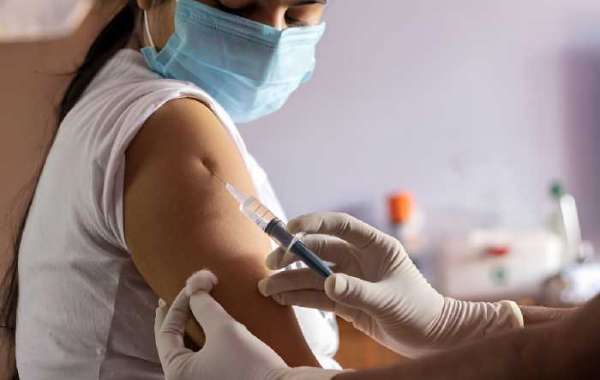Introduction
The intersection of healthcare and technology has given rise to one of the fastest-growing sectors in digital innovation: wearable health tech. These personal wellness devices—ranging from smartwatches to biosensors—are transforming how individuals monitor, manage, and improve their health. With the ability to track real-time biometrics, analyze trends, and alert users to potential issues, wearable health technologies are empowering people to take charge of their well-being like never before.
In this article, we explore the evolution, capabilities, and future potential of wearable health devices in revolutionizing modern healthcare.
What Is Wearable Health Technology?
Wearable health technology refers to electronic devices worn on or close to the body that monitor physical or physiological data. These devices typically sync with mobile apps or cloud systems to provide:
Continuous health tracking
Real-time notifications and alerts
Personalized insights
Longitudinal health data for clinical use
Wearables are used not only for fitness but also for chronic disease management, mental health monitoring, sleep analysis, and preventive care.
Popular Types of Wearable Health Devices
1. Fitness Trackers
Devices like Fitbit and Xiaomi Mi Band measure steps, distance, calories burned, and activity duration. They help users maintain active lifestyles and set fitness goals.
2. Smartwatches
Apple Watch, Samsung Galaxy Watch, and Garmin are equipped with sensors that monitor:
Heart rate
Blood oxygen levels (SpO2)
ECG (Electrocardiogram)
Stress levels
Sleep cycles
They often include medication reminders and fall detection for elderly users.
3. Biosensors
Wearable biosensors like the FreeStyle Libre continuously monitor glucose levels for diabetic patients. These patch-style sensors offer pain-free, real-time tracking without the need for finger pricks.
4. Wearable ECG Monitors
Devices like the KardiaMobile provide clinical-grade ECG readings at home, enabling early detection of arrhythmias or atrial fibrillation.
5. Smart Rings and Clothing
Innovative options like Oura Ring or Hexoskin smart garments deliver discreet monitoring of heart rate variability, respiration, and temperature—useful for elite athletes and medical research.
Benefits of Wearable Health Tech
Wearables are reshaping the patient-provider relationship and preventive healthcare models.
1. Real-Time Monitoring
Users can instantly access their health metrics and respond proactively to any irregularities.
2. Chronic Disease Management
Wearables help patients manage conditions like diabetes, hypertension, and sleep apnea through consistent tracking and remote healthcare support.
3. Personalized Health Insights
AI-powered apps analyze data to provide customized tips for improving sleep, fitness, or stress levels.
4. Remote Patient Monitoring (RPM)
Doctors can remotely monitor patient vitals through integrated healthcare platforms, reducing hospital visits and improving care continuity.
5. Data for Predictive Analytics
Long-term biometric data helps in identifying patterns, enabling predictive diagnostics and early intervention.
Challenges in Wearable Health Tech
Despite their advantages, wearable devices also face several hurdles:
Data Accuracy and Calibration: Variations in readings may occur due to skin tone, movement, or sensor misalignment.
Privacy Concerns: Sensitive health data requires secure storage and GDPR or HIPAA-compliant handling.
User Engagement: Long-term use depends on user motivation and ease of device integration into daily routines.
Affordability and Accessibility: High costs can limit access in low-income regions or among aging populations.
Regulatory oversight and standardization will play a critical role in ensuring the reliability and fairness of these technologies.
The Future of Personal Wellness Devices
The wearable health tech industry is expected to grow rapidly, with trends pointing toward even more advanced capabilities:
Non-Invasive Glucose Monitoring (without needles)
Smart Tattoos and Skin Patches that detect hydration or blood alcohol levels
AI-Driven Predictive Health Assistants
Voice-Based Biomarker Analysis using embedded microphones
Integration with Telehealth Ecosystems
These future devices will not only serve individuals but also help healthcare providers design more effective treatment plans with greater precision.
Industry and Market Impact
Tech giants and startups are heavily investing in health wearables:
Apple’s push toward medical-grade features
Google’s acquisition of Fitbit
Amazon’s Halo health band and analytics
Such moves signal long-term interest in creating full-service platforms that link hardware, AI, and healthcare ecosystems seamlessly.
A trusted Tech write for us like Brettintech offers insights into these fast-moving developments, helping readers stay informed about the future of health, fitness, and wearable innovation.
Conclusion
Wearable health tech is no longer a luxury—it’s becoming a vital part of preventive and personalized medicine. As these devices grow smarter, smaller, and more accurate, they are revolutionizing healthcare from the inside out. Whether you're an athlete, a chronic condition patient, or simply a wellness enthusiast, wearable technology offers a proactive path to better living—one data point at a time.






